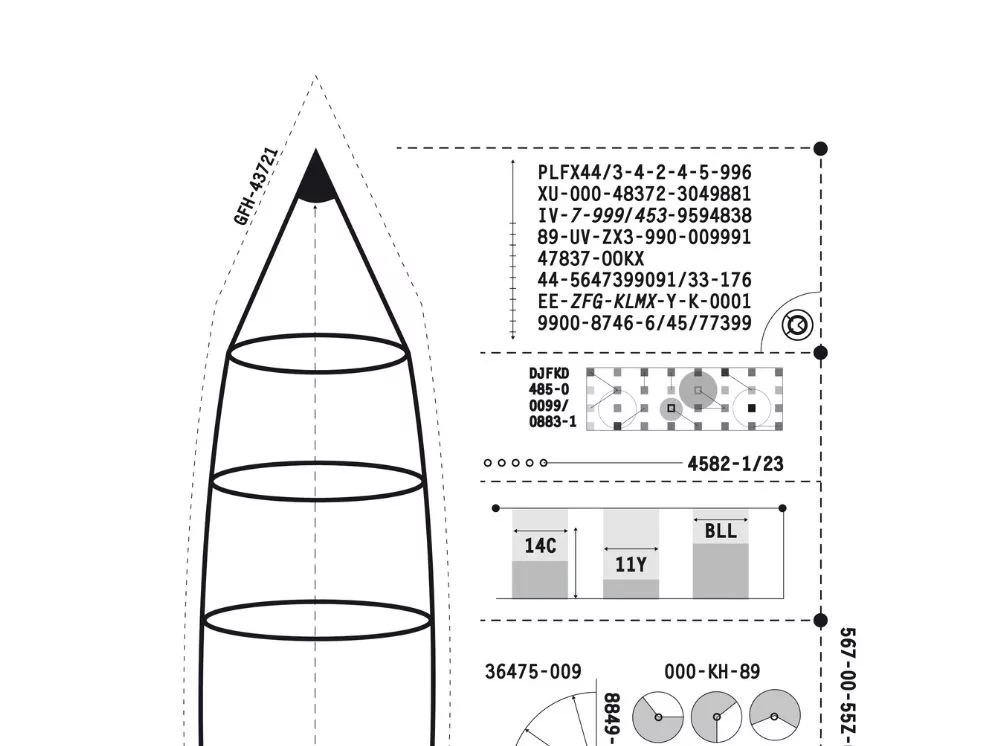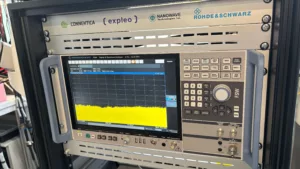AIT Best Practices to accelerate aerospace prototyping
The critical junction of prototype and production
The aerospace and defense industry is booming with innovation, driven by the NewSpace economy, increased demand for air travel, and growing defence spending. Ambitious startups and agile R&D teams are pushing the boundaries of what’s possible. Yet, a significant challenge persists: how do you transition a groundbreaking prototype from the lab bench to a flight-qualified or orbit-ready, mass-productible product? This journey is often hindered not by a lack of technical brilliance, but by the absence of robust Assembly, Integration, and Test (AIT) practices from the earliest stages.
This article is designed to help aerospace innovators navigate this critical junction. We’ll explore why proactive AIT strategies are essential for accelerating Technology Readiness Levels (TRLs) and Manufacturing Readiness Levels (MRLs), securing vital funding, and building a foundation for future scale.
Why TRL & MRL progression is non-negotiable for funding
In the aerospace sector, your product’s maturity is universally measured by its TRL and MRL. These levels are not merely technical benchmarks; they are direct indicators of your readiness for investment, partnerships, and market entry.
- Technology Readiness Levels (TRLs): Measure the maturity of a technology itself, from basic principles to flight-proven systems.
- Manufacturing Readiness Levels (MRLs): Assess the maturity of the manufacturing processes required to produce that technology, from concept to full-rate production.
A high TRL without a corresponding MRL can signal significant future risks, making it difficult to secure the next round of funding or critical contracts. Conversely, demonstrating a clear path to manufacturing readiness from prototyping vastly de-risks your venture.
Common prototyping pitfalls: where innovation gets stuck
Even the most brilliant aerospace prototypes can hit a wall during the transition phase due to:
- Siloed data & lost knowledge: test data, design iterations, and crucial observations are scattered across individual spreadsheets, local folders, or remain in the heads of a few key engineers. This makes it impossible to quickly access, analyze, or transfer knowledge as teams grow or projects evolve.
- Manual & error-prone processes: relying on manual instrument configuration, data entry, and report compilation leads to time-consuming tasks, human errors, and inconsistencies. This slows down iteration cycles and consumes valuable engineering time.
- Slow feedback loops: disconnected testing and design teams communicate via emails and ad-hoc meetings. This creates frustratingly slow feedback loops, delaying critical design optimizations and hindering rapid iteration.
- Inability to demonstrate mrl: agile r&d workflows, while great for early innovation, often lack the standardization and traceability required to formally demonstrate manufacturing readiness for investors or regulatory approvals.
- Underutilized equipment & engineers: expensive rented or shared test equipment may sit idle due to inefficient scheduling or manual setup. engineers spend more time on administrative tasks than on core development.
These pitfalls don’t just cause headaches; they directly impact your ability to secure funding, meet regulatory milestones, and ultimately, get your product to orbit.
AIT best practices: building a scalable foundation from day one
The key to overcoming prototyping pitfalls is to integrate robust Assembly, Integration, and Test (AIT) principles from the very beginning. This isn’t about stifling innovation with bureaucracy; it’s about embedding Design for Manufacturing, Assembly, Integration, and Test (DFMAIT) into your DNA.
By adopting these strategic best practices, aerospace innovators can accelerate both their technology’s maturity and their manufacturing readiness.
Best Practices for Accelerating Technology Readiness Level (TRL)
These practices focus on speeding up your R&D cycles, validating designs more efficiently, and ensuring your technology is robust.
- Adopt a modular and tightly-integrated test system
- Best Practice: Start small, then plug-and-play additional instruments or software drivers as the prototype evolves. Make sure every new element “speaks” to the same central controller or test sequencer.
- Why it accelerates TRL: Preserves flexibility in the early stages of prototyping, while the integration offers fast validation of the overall performance as development progresses.
- Build robust data acquisition & telemetry, automate when possible:
- Best Practice: Centralise data logging in a single repository, enforce a common file format (CSV, S-parameter, etc.), and let scripts or a low-code test sequencer perform repetitive runs.
- Why it accelerates TRL: Eliminates manual copy-paste errors, shrinks setup time, and lets engineers run more cycles per day—turning “days per iteration” into “hours per iteration.”
- Close the loop with digital-first, cross-team workflows
- Best practice: Connect design, assembly, and test teams. Use digital tools and configure data repositories to eliminate siloes and emails as much as possible.
- Why it accelerates TRL: (near) real-time feedback surfaces anomalies instantly, enabling rapid design tweaks and preventing the costly re-test waits that stall maturity.
Best practices for accelerating Manufacturing Readiness Level (MRL)
These practices are crucial for demonstrating your ability to consistently produce your technology, securing funding, and preparing for scale.
- Design for Manufacturing, Assembly, Integration, and Testing (DFMAIT):
- Best Practice: Proactively integrate manufacturing, assembly, integration, and test considerations directly into your product design process. This involves designing components and systems with their eventual production in mind.
- Why it accelerates MRL: Ensures that your prototype is not only innovative but also inherently manufacturable and testable at scale. This early consideration prevents costly redesigns and delays when transitioning to production, directly supporting MRL progression and reducing future manufacturing risks.
- Centralized, structured data:
- Best practice: Establish a single, standardized data store for all AIT data. This includes test results, sensor readings, assembly logs, contextual information (e.g., operator comments, environmental conditions), and version control for all processes.
- Why it accelerates MRL: Enables universal search, rapid access to historical data, and a complete lineage for every part. This structured data is fundamental for demonstrating process control, traceability, and auditability required for MRL assessments and building a reliable manufacturing foundation.
- Proactive compliance & reporting:
- Best practice: Embed compliance requirements (e.g., EN9100/AS9100) into your workflows from the start. Leverage tools that automatically generate audit trails, test reports, and End Item Data Packages (EIDPs).
- Why it accelerates MRL: Effortlessly demonstrates manufacturing readiness to investors and regulators, cutting report generation time from hours to minutes. This builds immediate credibility and trust, directly supporting MRL validation and reducing compliance burdens.
Key outcomes: why adopting early AIT best practices matters
By adopting these AIT best practices during prototyping, you can achieve critical outcomes:
- Accelerated TRL & MRL progression: Faster iteration cycles and proactive demonstration of manufacturing readiness shorten your path to market.
- Enhanced funding opportunities: Present a compelling, de-risked case to investors and secure grants with undeniable evidence of manufacturing maturity and scalability.
- Reduced development costs: Minimize manual errors, rework, and wasted engineering time, making your R&D budget go further.
- Improved product quality & robustness: Data-driven insights from early testing lead to more optimized and reliable designs.
- Seamless transition to production: Capture critical knowledge and standardize processes during prototyping, ensuring a smooth scale-up when large orders arrive.
- Stronger collaboration: Break down internal silos and foster efficient communication between design, test, and eventual production teams.



